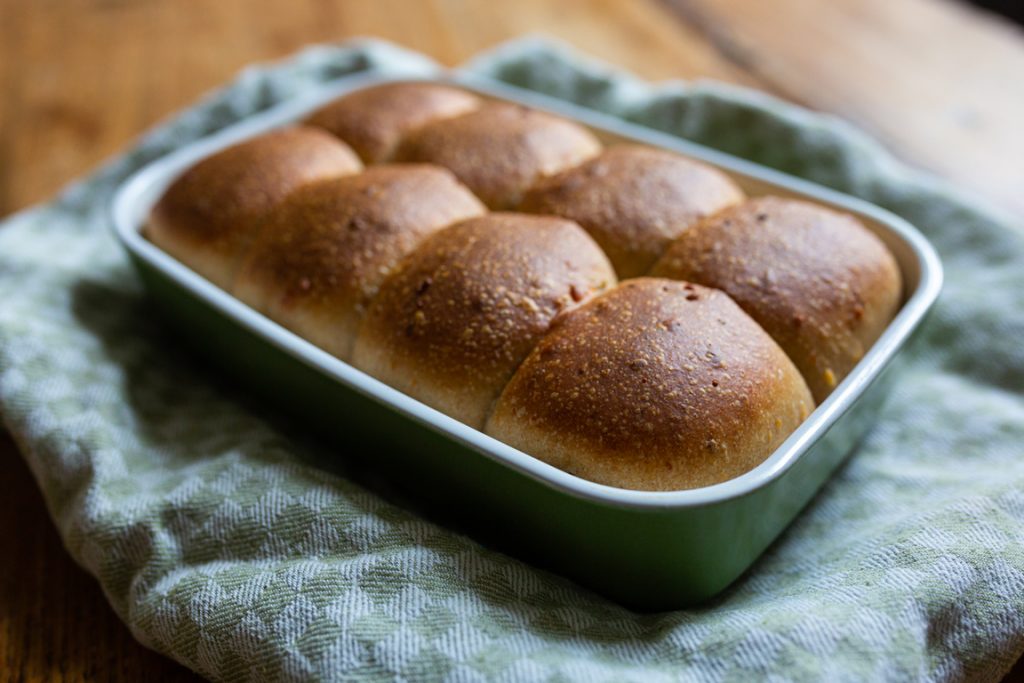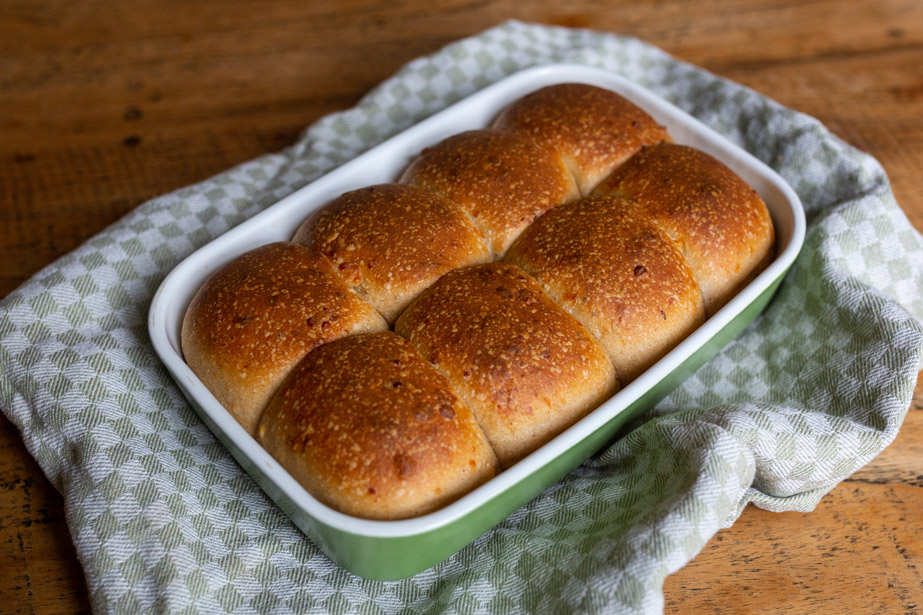Ancient sources mention a lot of ingredients that were used in bread. Some of them served to improve the quality of the bread, others had a medical function, but most ingredients were added as a seasoning. The collection of texts written by Athenaeus of Naucratis (2nd century AD) is an important source for types of bread and ingredients in antique bread. These kyboi or dice bread are a good example. The recipe is from my Historisch Bakboek Brood (Historical Bread Baking Cookbook).
Bread with cheese, dill and olive oil
Athenaeus writes in his book Deipnosophistae:
How should you know that dice, not the kind you always use, are square-shaped loaves seasoned with dill, cheese, and oil…
The kyboi recipe contained dill, cheese and olive oil as seasonings. It turned out to be an excellent combination. Fresh dill didn’t do the job. It didn’t gave much flavour. I used dill seeds instead. Dill seeds were regularly used in antiquity. It gives dishes a strong aromatic flavour. I didn’t know what would be best to use: a young fresh cheese or an older cheese. The young fresh cheese didn’t gave much flavour. My experiments with a pecorino romano was astonishingly delicious, especially in combination with the dill seeds.
What about the shape of these ‘dice’ buns. What would Romans have used in ancient times to shape bread into dice? Baking tins and pans in all sort of shapes were in circulation. I used a square baking dish and left the buns in it, in their second and third period of proofing. Slowly the buns became a bit more square, while they were looking for some space to rise. The result is square buns! I doubt whether you can play a game with these buns. I don’t think they will make it to the gambling table. Then they are long gone!

Roman fresco with bread, Pompeii
Roman bread recipe: kyboi
Ingredients
For 12 dice
400 grams of bulged wheat flour
100 grams of sourdough
8 grams of sea salt
180 ml lukewarm water
4 tablespoons of olive oil
3 teaspoons dill seeds, coarsely ground in a mortar
100 grams of grated pecorino romano
Do you prefer yeast to sourdough? Then use instead of the sourdough:
* 7 grams of dried yeast
* 210 to 230 ml lukewarm water (instead of 180 ml water)
And follow the instruction behind YEAST instead of SOURCES in the preparation below.

Preparation
Put the flour, sourdough (or yeast), salt, lukewarm water, olive oil and ground dill seeds in a bowl and knead into a ball. Place the dough on your kitchen counter and knead into a smooth dough, in about 10 minutes. Add the grated pecorino and knead for another 5 minutes.
SOURDOUGH: Put the ball of dough in an oiled bowl. Cover, and let it rise for 30 minutes. Pull up the dough on one side, stretch it, and fold it over the other side. Let it rise for 30 minutes. Stretch and fold again and let it rise for another 30 minutes.
Divide the dough into 12 pieces and form them into little balls. Roll them up tight. Let them rise for 1 hour. Gently degas them (push gently, they will lose a bit of air) and roll them up tight again. Put the little balls in a square or rectangular baking dish or baking tin, just against each other. Flatten them a little by pushing the tops down (gently). Cover, and let them rise for 1 hour. Gently press again on their tops and let them rice until they have approximately doubled in volume (about 2 to 3 hours).
YEAST: Divide the dough into 12 pieces and form them into little balls. Roll them up tight. Let them rise for 30 minutes. Gently degas them (push gently, they will lose a bit of air) and roll them up tight again. Put the little balls in a square or rectangular baking dish or baking tin, just against each other. Flatten them a little by pushing the tops down (gently). Cover, and let them rise for 30 minutes. Gently press again on their tops and let them rice until they have approximately doubled in volume (about 1 hour).
Preheat the oven to 240 degrees, well in advance. Leave the buns in the baking tin!
Put the buns in the oven and bake at 240 degrees for about 10 minutes until they are nice and brown.

